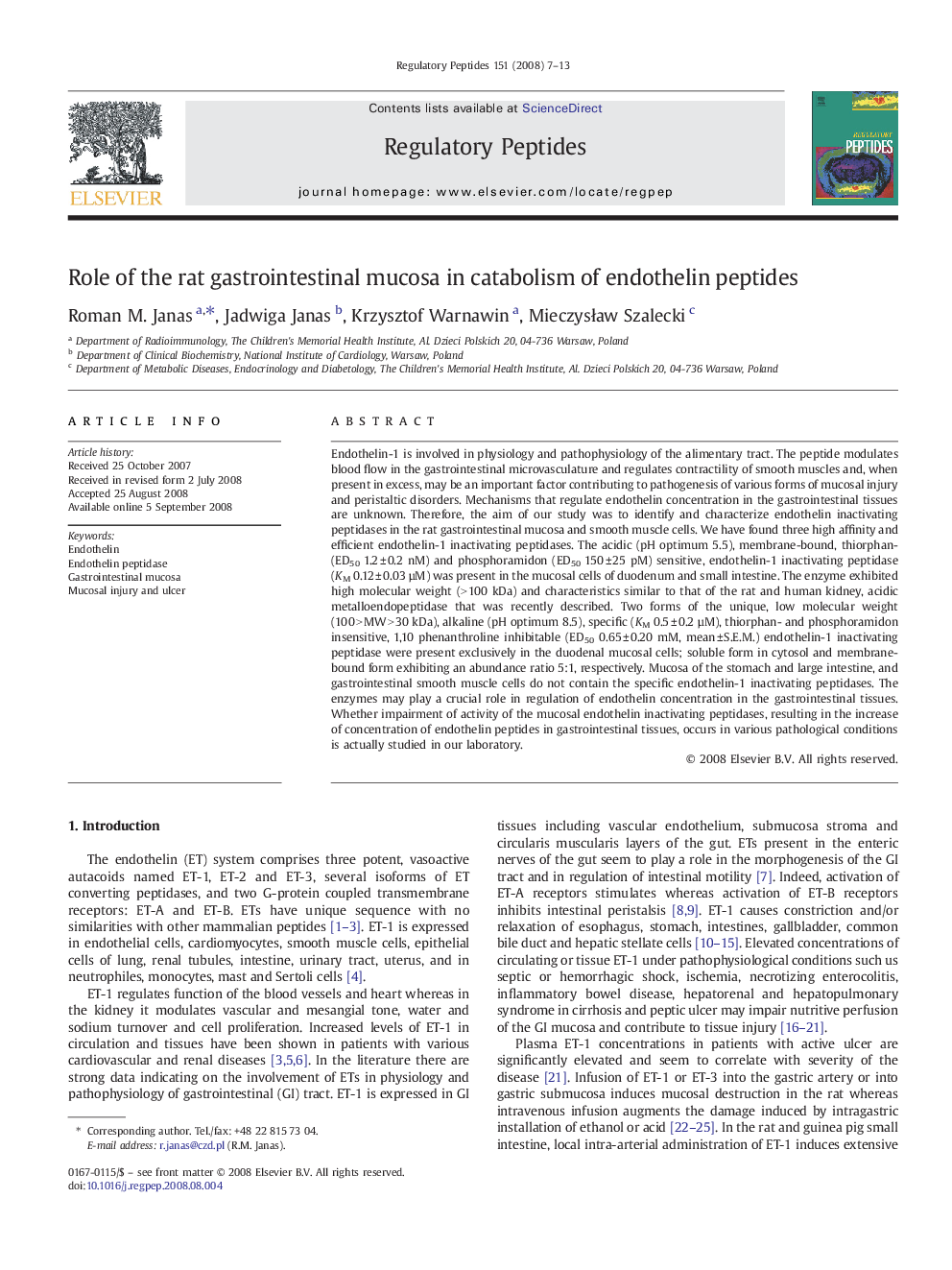| Article ID | Journal | Published Year | Pages | File Type |
|---|---|---|---|---|
| 2023015 | Regulatory Peptides | 2008 | 7 Pages |
Endothelin-1 is involved in physiology and pathophysiology of the alimentary tract. The peptide modulates blood flow in the gastrointestinal microvasculature and regulates contractility of smooth muscles and, when present in excess, may be an important factor contributing to pathogenesis of various forms of mucosal injury and peristaltic disorders. Mechanisms that regulate endothelin concentration in the gastrointestinal tissues are unknown. Therefore, the aim of our study was to identify and characterize endothelin inactivating peptidases in the rat gastrointestinal mucosa and smooth muscle cells. We have found three high affinity and efficient endothelin-1 inactivating peptidases. The acidic (pH optimum 5.5), membrane-bound, thiorphan- (ED50 1.2 ± 0.2 nM) and phosphoramidon (ED50 150 ± 25 pM) sensitive, endothelin-1 inactivating peptidase (KM 0.12 ± 0.03 µM) was present in the mucosal cells of duodenum and small intestine. The enzyme exhibited high molecular weight (> 100 kDa) and characteristics similar to that of the rat and human kidney, acidic metalloendopeptidase that was recently described. Two forms of the unique, low molecular weight (100 > MW > 30 kDa), alkaline (pH optimum 8.5), specific (KM 0.5 ± 0.2 µM), thiorphan- and phosphoramidon insensitive, 1,10 phenanthroline inhibitable (ED50 0.65 ± 0.20 mM, mean ± S.E.M.) endothelin-1 inactivating peptidase were present exclusively in the duodenal mucosal cells; soluble form in cytosol and membrane-bound form exhibiting an abundance ratio 5:1, respectively. Mucosa of the stomach and large intestine, and gastrointestinal smooth muscle cells do not contain the specific endothelin-1 inactivating peptidases. The enzymes may play a crucial role in regulation of endothelin concentration in the gastrointestinal tissues. Whether impairment of activity of the mucosal endothelin inactivating peptidases, resulting in the increase of concentration of endothelin peptides in gastrointestinal tissues, occurs in various pathological conditions is actually studied in our laboratory.
